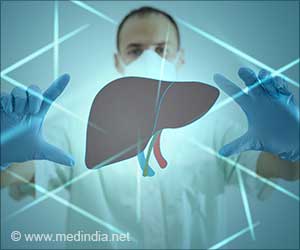Electronic health records (EHRs) commonly used in hospitals nationwide fail to detect up to one in three potentially harmful drug interactions and other medication errors.

‘Medication safety and overall safety problems in hospitals continue to occur at a high rate despite the almost ubiquitous use of EHRs.’
Read More..




"EHRs are supposed to ensure safe use of medications in hospitals," says David C. Classen, M.D., the study’s corresponding author and a professor of internal medicine at U of U Health. "But they’re not doing that. In any other industry, this degree of software failure wouldn’t be tolerated. You would never get on an airplane, for instance, if an airline could only promise it could get you to your destination safely two-thirds of the time."Read More..
The study appears in JAMA Network Open.
First deployed in the 1960s, EHRs replaced written medical records and manual filing systems. They became almost universally adopted in the early 21st century after an Institute of Medicine report found that medical errors accounted for 1 million inpatient injuries and 98,000 deaths annually. According to the report, medication safety problems were the most frequent cause of preventable harm.
Medical professionals hoped that widespread use of EHRs would reduce this problem. The computerized systems are designed to issue warnings to doctors if their orders for medication could result in allergic reactions, adverse drug interactions, excessive doses, or other potentially harmful effects. However, recent studies suggest that medication safety and overall safety problems in hospitals continue to occur at a high rate despite the almost ubiquitous use of EHRs by hospitals.
One snag is that hospitals must customize and adapt their EHR software to meet their own needs, Classen says. This is a complex process that makes it difficult to keep up with all changes in drug safety. So, for example, a serious drug interaction that would trigger EHR warnings at one hospital might not at another one.
Advertisement
However, Classen says federal regulators only inspect EHR systems with factory specifications, meaning that whatever alterations hospitals make after installation aren’t accounted for.
In one scenario, for instance, a 52-year-old woman is admitted to the hospital with pneumonia. Prior to hospitalization, she was taking warfarin, a blood-thinning medication, once a day to combat deep vein thrombosis. After admission, she receives warfarin three times a day. This excessive dosage goes undetected by the hospital’s EHR system for five days. As a result, the patient has a large hemorrhage and dies of causes directly related to the overdose of warfarin.
Scenarios like this one were fed directly into EHR systems at 2,314 hospitals nationwide to see if their systems would perform better. All of the tests were conducted over a 10-year span, 2009 to 2018.
The researchers found that, in 2009, these systems correctly issued warnings or alerts about potential medication problems only 54% of the time. By 2018, EHRs detected about 66% of these errors.
"These systems meet the most basic safety standards less than 70% of the time," the researchers conclude. "These systems have only modestly increased their safety during a 10-year period, leaving critical deficiencies in these systems to detect and prevent critical safety issues."
In addition, Classen notes that the hospitals in this study used the EHR evaluation tool on a voluntary basis to improve patient safety and care. Many hospitals do not participate in such evaluations, suggesting that the true safety performance of U.S. hospitals could be worse than the study found.
Source-Eurekalert










